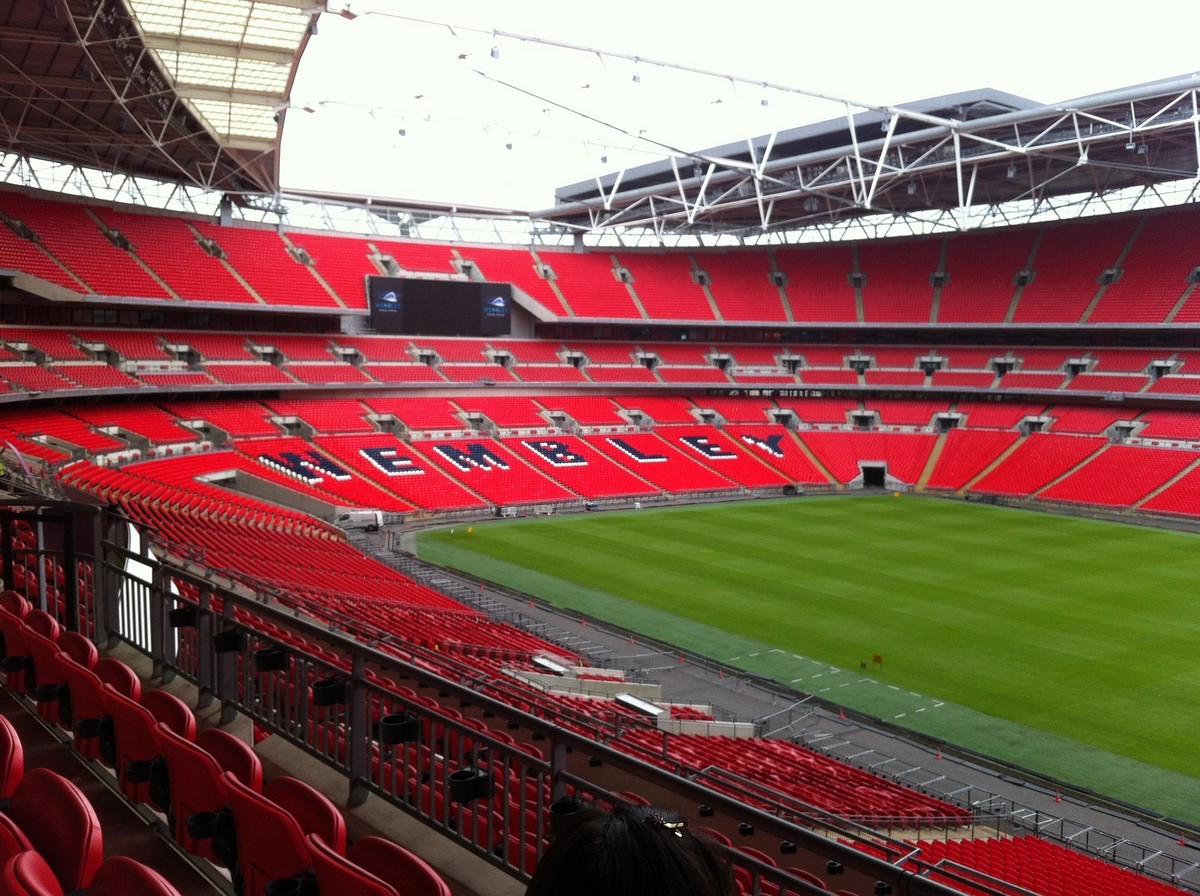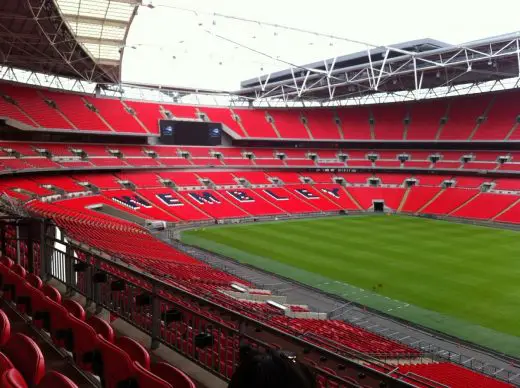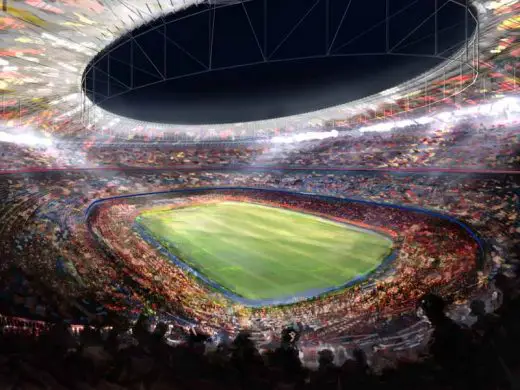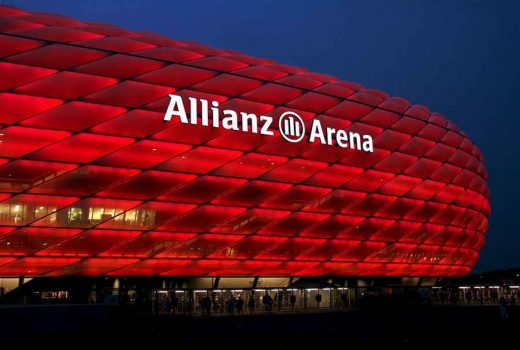Top-5 biggest football stadiums and their history, Sport building images, Sports arena architecture structures
Top-5 Biggest Football Stadiums and Their History
28 September 2021
Every sport has its essence, and if it is about football, everything goes beyond because of the fans. No doubt, fans cheer for their team and boost the players’ morale, but things go well when the stadium has full of audiences, and sometimes, in some football stadiums, the audience’s size reaches 1,00,000.
If you are a football lover, you must know the 1950 FIFA World Cup final hosted at Maracana Stadium, Brazil. The stadium was fully packed with 200,000 audiences to view the final match between Brazil and Uruguay. This stadium made a dream come true for many fans who wished to watch the live match of their favorite team, especially in the final.
List of Top 5 Biggest Football Stadiums in the World
Based on the information provided by Sbobet, there are many football stadiums whose audience carrying capacity lies from 80,000 to 150,000. So, let’s have a look at the biggest football stadiums in the world so that you can catch the live-action of the upcoming FIFA World Cup.
1. Wembley Stadium
Wembley Stadium is recognized as the heart & soul of football. Even during the 20th century, the stadium was the iconic place for sports events, and at present, Wembley Stadium is the largest stadium in Great Britain, having the capacity of 90,000.
The present structure of the stadium lies in the same place where it was in 1923, which means a complete renovation/redevelopment was done in 2007. The design of Wembley Stadium is amazing, as there are no pillars and the steel roof gets support from an arch. The sitting position is perfectly designed so that the spectacular can get a clear view of the pitch. Moreover, the roof is a movable one that provides shelter to the audience amid rain.
Initially, the stadium was built in 1923 to conduct the exhibition of the British Empire. Later on, in 1948, it witnessed the London Olympic Games, and after that, many football games also happened in this stadium. In 2002, the re-construction work of stadium started by Foster (English) with Partners and Populous and finally it was opened again in 2007 with a new and stylish look, round in shape structure, and tilted arch.
Every year, Wembley Stadium is chosen as the venue of the Final of the Football Association Cup. This stadium is the home of the English National Football team and if you are a fan of this team, you can check the recent livescore on Buaksib.
2. Camp Nou Stadium, Spain
If you are a big fan of the F.C. Barcelona football club, you would have heard about the Cam Nou Stadium, i.e., the homeland of this football club. Indeed, it is also the largest football stadium in Europe that retains the occupancy of 99,354 audiences.
Camp Nou stadium is quite popular in Spain, and for re-construction work, which is to be completed by 2022, a separate referendum was launched for approval from the people of Spain.
Originally, this stadium was built in 1957, but before that, it passed with many hurdles, and the prime one was the acquisition of land. It took around two years to finalize the land deal, and finally, in 1954, the foundation of Camp Nou was put. But the situation became worse when the construction cost went to 4 times higher than the expected price, i.e., 288 million pesetas. However, the club didn’t lose hope and went through multiple ways to generate money, such as mortgages, loans, and selling the land at Les Cortos.
The effort and hardship of the club didn’t go in vain as the Government of Spain reduced the financial burden from the club’s shoulder, and finally, Camp Nou was inaugurated on 24 September 1957. This stadium is the 4th largest football stadium in the world and hosted many football matches such as European Cup (1989), Inter-Cities Fairs Cup, UEFA Super Cup, FIFA World Cup (1982), and others.
3. First National Bank Stadium (FNB) – South Africa
If you heard about FNB Stadium, you must be knowing that it is the home of Kaizer Chiefs F.C. and is also the largest stadium in African Continent, located in South Africa. The stadium came into the light in 1989, having a capacity of 80,000, and after that, it went for re-construction in 2009 to host the 2010 FIFA World Cup with the capacity of 94,736 audiences.
Calabash, an African pot, inspires the new building design of FNB Stadium, and it has flashy floodlights, 2 executives’ suits, and many more. The stadium has ten vertical lines that enable the fans to enjoy the match. But, if you have ever noticed the vertical lines of another football stadium, you will get only 9. But, in South Africa, 9 number is treated as an unlucky number, so the management has added one new vertical line in the stadium.
The FNB Stadium has hosted the FIFA World Cup (2010), African Cup of Nations (2013), and many local soccer matches. Besides the football matches, the management of this stadium also hosts other sports and events, such as Rugby, Concerts, and Christian gathering.
4. The Allianz Arena, Germany
The Allianz Arena – Munich Stadium is widely known for its structure that includes ETFE Plastic panels and is the first stadium in the world that changes colors to separate the two teams. For instance, the two domestic teams of Germany, Bayern Munich and Munich 1860, have a color code of Red and Blue, respectively. And the color-changing phenomenon of a stadium enables the audiences to figure out the players of two teams.
The foundation stone of the stadium was laid down in 2002, and also luminous arena was fitted with ETFE panels that emit lights. The stadium was open for the public in 2005, and the ownership lies in the hands of Bayern Munich.
The management of the stadium has hosted FIFA World Cup (2006), UEFA Euro Cup (2020), and many domestic soccer tournaments.
5. Estadio Azteca, Mexico
Estadio Azteca, Mexico, is the world’s first football stadium to host two FIFA World Cup Finals, i.e., in 1970 and 1986. The stadium is situated in Mexico and is the home ground of Club America and the Mexico National Football Team. Moreover, this stadium has witnessed the two football legends winning the FIFA World Cup, i.e., Pele in FIFA World Cup 1970 and Maradona in FIFA World Cup 1986.
The construction work of this stadium was initiated in 1961 by the architects Pedro Ramirez and Rafael Mijares. The first match was played in 1966 with the occupancy of 107,494 audiences. After that, in 2015, Grupo Televisa (owner) planned to reconstruct the stadium in two phases.
In the first phase, the demolition of the seating at the lower east stand and restaurant will take place, and a new hospitality region will be created. In the second phase, new media boxes will be constructed and planned to reduce the audience capacity. The re-construction work was finished in 2016 with 87,000 audience capacity.
Comments on this guide to top-5 biggest football stadiums and their history article are welcome.
Football Stadiums
Football Stadium Buildings – Selection:
New Chelsea Football Stadium
Architect: Herzog & de Meuron
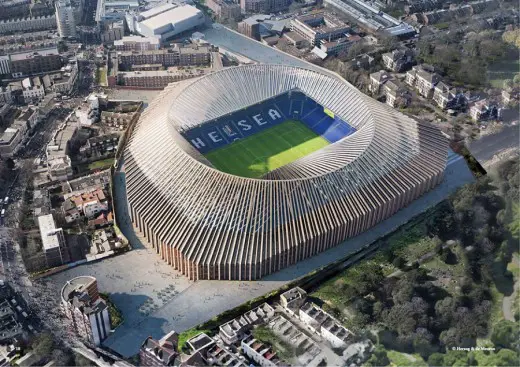
image from architect
Emirates Stadium : Arsenal FC ground, London
Design: HOK Sport Architecture
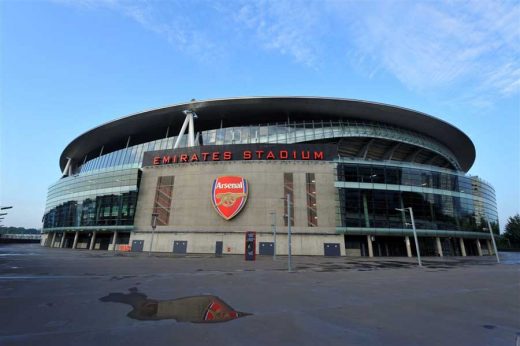
photo © Nick Weall
Tottenham Hotspur Stadium:
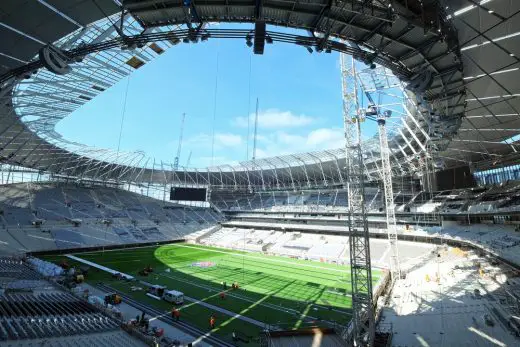
photo © Greshoff
New San Siro
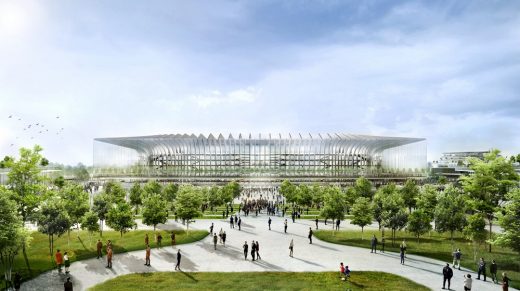
image courtesy of architects
Wembley Stadium, London
Design: Foster + Partners / HOK Sport
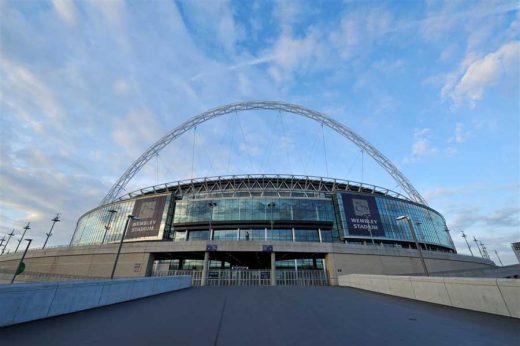
photo © Nick Weall
West Ham United Football Stadium
Comments / photos for the Top-5 biggest football stadiums and their history page welcome

